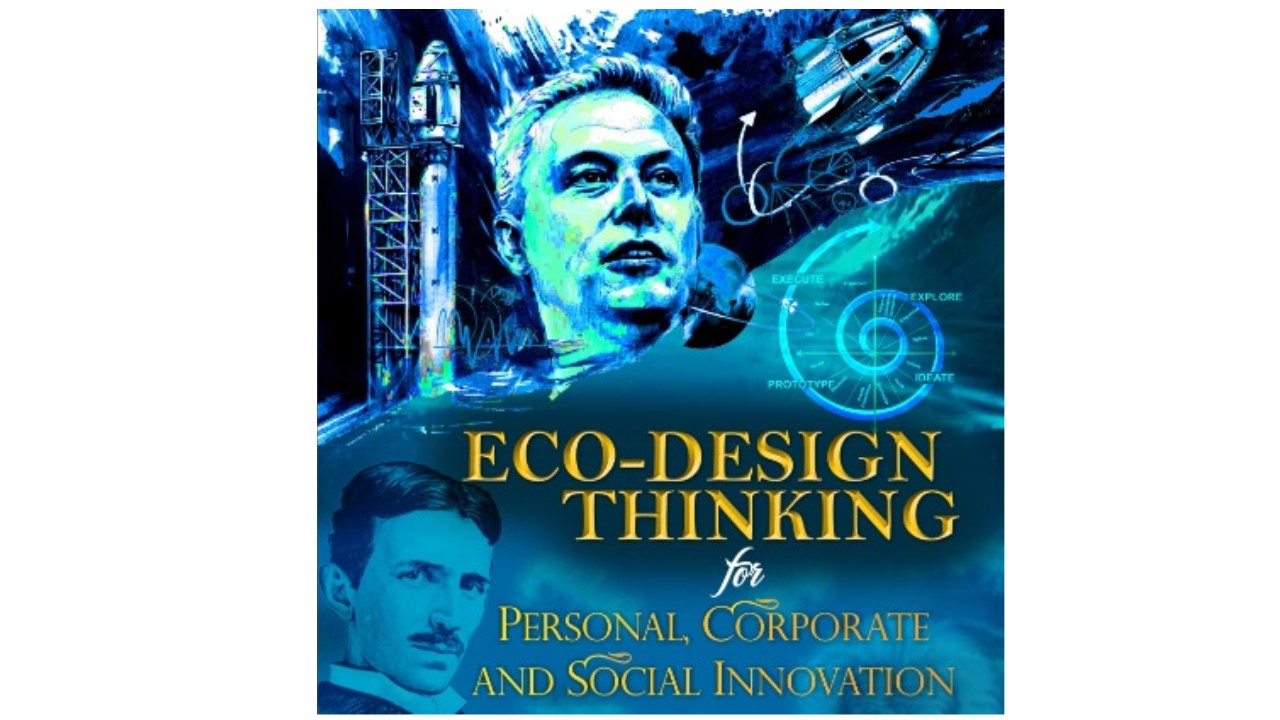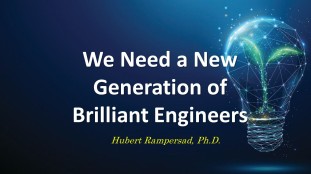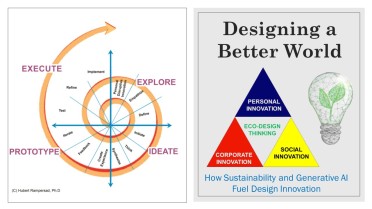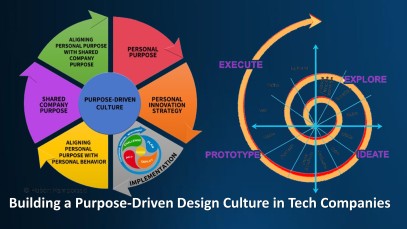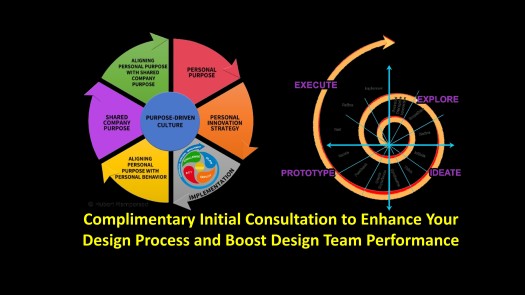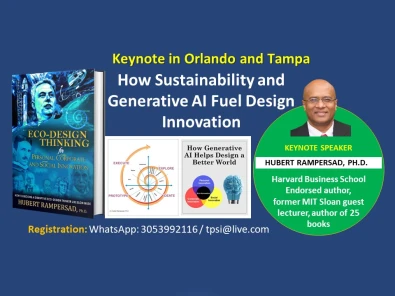How the Doomed Titan Sub Tragedy Could Have Been Avoided
Four months ago, OceanGate achieved a significant milestone by acquiring a patent for its innovative acoustic monitoring technology for carbon-fiber hulls. However, on June 18th, tragedy struck when the Titan submersible launched into the Atlantic Ocean and imploded, resulting in the loss of five lives. According to information on OceanGate’s website, the Titan was designed and engineered by OceanGate Inc. in partnership with NASA, Boeing, and the University of Washington. However, Boeing has denied any involvement as a partner in this project.
Experts have suggested that the collapse of the carbon-fiber hull could have been due to the immense pressure in the deep-sea environment.  It has been reported that James Cameron, the director of the blockbuster movie ‘Titanic,’ holds OceanGate accountable for the Titan sub mishap, citing their inappropriate carbon fiber design. Many experts in the deep submergence field share Cameron’s apprehensions about the safety of the vessel and OceanGate’s experimental approach to design. However, it is essential to note that the carbon-fiber hull was not the only contributing factor to the unfortunate incident. Numerous other factors were at play, including a flawed design approach, lack of integrity from CEO Stockton Rush, neglect of safety protocols, enlisting college students to design vital components of the Titan, and utilizing low-cost, off-the-shelf components. According to a reporter, he expressed disregard for safety, considering it as just pure waste. He constantly talked about breaking the rules and disregarding safety measures and did everything he could to avoid regulation and liability. His reckless behavior was widely known, but it seemed impossible to address. A photographer reveals he was alarmed by his ‘cavalier attitude.’ He did not take criticism well and considered himself an “innovator.” Read “How a Bogus Lawsuit Led to the Titan Sub Tragedy.” Too much confidence can be blinding, leading fervent self-believers to dismiss or ignore valid criticism—and even to try silencing it. It is also interesting to note that a Florida couple filed a lawsuit against him for fraud.
It has been reported that James Cameron, the director of the blockbuster movie ‘Titanic,’ holds OceanGate accountable for the Titan sub mishap, citing their inappropriate carbon fiber design. Many experts in the deep submergence field share Cameron’s apprehensions about the safety of the vessel and OceanGate’s experimental approach to design. However, it is essential to note that the carbon-fiber hull was not the only contributing factor to the unfortunate incident. Numerous other factors were at play, including a flawed design approach, lack of integrity from CEO Stockton Rush, neglect of safety protocols, enlisting college students to design vital components of the Titan, and utilizing low-cost, off-the-shelf components. According to a reporter, he expressed disregard for safety, considering it as just pure waste. He constantly talked about breaking the rules and disregarding safety measures and did everything he could to avoid regulation and liability. His reckless behavior was widely known, but it seemed impossible to address. A photographer reveals he was alarmed by his ‘cavalier attitude.’ He did not take criticism well and considered himself an “innovator.” Read “How a Bogus Lawsuit Led to the Titan Sub Tragedy.” Too much confidence can be blinding, leading fervent self-believers to dismiss or ignore valid criticism—and even to try silencing it. It is also interesting to note that a Florida couple filed a lawsuit against him for fraud.
In 2021, he expressed his desire to be recognized as an innovator who broke the rules. He believed he “was going to be the Elon Musk of the ocean.” Rush earned a bachelor’s degree in aerospace engineering from Princeton University and an M.B.A. from the Haas School of Business at the University of California, Berkeley.
OceanGate is not the only company whose design approach sucks and which, as a result, will suffer significant financial damage and even go bankrupt. Numerous CEOs in corporate America play designer and prioritize their personal design choices over essential product elements and critical safety regulations, endangering human lives. They can learn a valuable lesson from the tragedy of the Titan. This article aims to offer a sustainable solution for this current epidemic. It will detail each design stage in which Stockton Rush intentionally made errors that resulted in the collapse of the Titan submersible and the unfortunate loss of its five occupants.
The unprofessional, unethical, disorganized, ad-hoc, and trial-and-error design approach
It seems that the design of the Titan sub was flawed from the start. The engineering approach taken by OceanGate was haphazard, ad hoc, and inadequate. Stockton Rush hired college students from Washington State University to design critical electronics systems for the Titan sub. A former OceanGate finance director said some engineers in the Titanic submersible company were teenagers who earned $15 an hour at one point. His design method was ineffective as it relied on a trial-and-error approach, resulting in undesirable consequences. Before his tragic final voyage on the vessel, Rush had passionately defended its experimental design, insisting it was completely safe. He also argued that strict safety regulations can often hinder innovation. He boasted on Instagram in 2020 that its Titanic submersible would detect hull defects with ‘incredible accuracy’ and ‘well before the crew’s safety is threatened.
Stockton Rush may have been dishonest and lacked sufficient knowledge of sustainable design innovation. 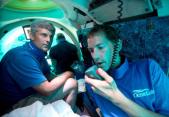 His behavior was reminiscent of that of a criminal. His unethical conduct and inadequate leadership skills greatly impacted his performance as a CEO. OceanGate’s former finance director said she quit when Stockton Rush asked her to be the Titanic submersible’s chief pilot after firing the original one for raising safety issues information. On a past Titan sub-dive, the pilot lost control when the thrusters malfunctioned, causing it to spin in 360-degree circles less than 1,000 feet from the Titanic.
His behavior was reminiscent of that of a criminal. His unethical conduct and inadequate leadership skills greatly impacted his performance as a CEO. OceanGate’s former finance director said she quit when Stockton Rush asked her to be the Titanic submersible’s chief pilot after firing the original one for raising safety issues information. On a past Titan sub-dive, the pilot lost control when the thrusters malfunctioned, causing it to spin in 360-degree circles less than 1,000 feet from the Titanic.
As previously stated, the Titan disaster was not exclusively attributed to the carbon fiber hull and its design. It seems that the design approach of OceanGate was not only amateurish but also lacked integrity, based on the unethical behavior of Stockton Rush. This article will delve deeper into the errors made during OceanGate’s design process. It is based on my experience as a senior design innovation coach at ASML, the most important tech company in the world and Europe’s most valuable tech firm. First, I’d like to highlight my article Top 10 Causes of Poor Designs.
Top 10 causes of bad designs:
 INCOMPETENT DESIGNERS: Designers don’t use their right brain and left brain in a balanced way, lacking an intuitive, open, empathic, ethical, and growth mindset. Read “Why Creativity Sucks“.
INCOMPETENT DESIGNERS: Designers don’t use their right brain and left brain in a balanced way, lacking an intuitive, open, empathic, ethical, and growth mindset. Read “Why Creativity Sucks“.- DESIGN PROCESS HAS ENDPOINT: The design process should be a never-ending, non-linear, circular, iterative, incremental, cyclic, and concentric process that never stops.
- NON-HOLISTIC DESIGN APPROACH: The design method should prioritize cultivating a purpose-driven design culture that positively impacts society.
- FOCUS ON KNOWLEDGE RATHER THAN IMAGINATION: The design method should take an inside-out approach to creativity, emphasizing the designer’s imagination.
- DESIGNERS LACK GENUINE EMPATHY AND PERSONAL INTEGRITY: The higher your personal integrity, the better your attentiveness, the better your empathic skills, the better your design. Genuine empathy starts with personal integrity.
- NON-DISRUPTIVE DESIGNERS: The design method should start with designing the designer’s life to become disruptive with a growth-open mindset.
- DOES NOT FACILITATE THE USE OF GENERATIVE AI: Designers lack critical thinking skills to use generative AI tools like Stable Diffusion and ChatGPT to create novel designs.
- BAD DESIGN LEADERS: Design leaders lack the coaching skills to cultivate team learning and enhance team performance.
- DISENGAGED DESIGN TEAMS: To enhance the designer’s engagement, aligning and synchronizing the designer’s ambition with the design team’s ambition is needed.
- COZY DESIGN MEETINGS AND USE OF TOOLS: The design method focuses mainly on a process-driven, analytical thinking, cozy, theatrical design process, and completing related tasks in a particular order using design tools.
The figure below illustrates the top 10 reasons behind these bad designs.

It appears that OceanGate’s design approach has all these shortcomings. From my analysis using the Eco-Design Thinking methodology, it seems that the design process for the OceanGate Titan submersible has missed out on fundamental design steps and has been carried out in an unprofessional and improvised manner. Please take the time to read this article: How the unconventional design of the Titan sub may have destined it for disaster. It seems that Rush lacked a sustainable design methodology. This is a common occurrence in corporate America. Even high-profile figures like Elon Musk, with his $3 billion Mars rocket failure and the Boeing 737 Max airplane, have encountered similar problems. Is it time for corporate America to adopt a sustainable design methodology to address these issues? It’s puzzling why engineering universities and large tech companies still adhere to antiquated design methods instead of taking action on this matter. This new design method is centered around eco-design thinking.
We Need a New Generation of Brilliant Engineers
We need a new generation of brilliant engineers with a new mindset to design a better world and create a vibrant future. Engineering colleges and universities today do not commonly teach the skills that future engineers will need. Engineers must possess skills like creativity, imagination, agility, critical thinking, and sustainability to become visionary and innovative entrepreneurial leaders or to design innovative products. These skills are not typically associated with engineering, but the rapid rate of technological change has made most college and university courses obsolete by the time students graduate. STEM programs give engineers insights into science, technology, engineering, and mathematics. However, they often fail to nurture the holistic, authentic, and imaginative qualities essential for tomorrow’s engineers. Read my article “We Need a New Generation of Brilliant Engineers”.
We Also Need a New Design Method
The era of design thinking has ended; read my article “The Era of Design Thinking Has Come to an End, Replaced by Eco-Design Thinking.” Eco-design thinking goes beyond traditional design thinking. It is based on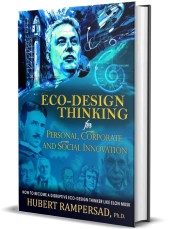 my latest book, “Eco-Design Thinking for Personal, Corporate, and Social Innovation.” I suggest checking out this excerpt for further insights. The eco-design thinking model is depicted in the figure below and consists of four stages: Explore, Ideate, Prototype, and Execute. It is an iterative, incremental, cyclic, and concentric process of exploring, ideating, prototyping, and executing (Rampersad, 2022). Generative AI tools can be beneficial in all phases of this design process. Please look at this “Top 35 Generative AI Tools by Category”.
my latest book, “Eco-Design Thinking for Personal, Corporate, and Social Innovation.” I suggest checking out this excerpt for further insights. The eco-design thinking model is depicted in the figure below and consists of four stages: Explore, Ideate, Prototype, and Execute. It is an iterative, incremental, cyclic, and concentric process of exploring, ideating, prototyping, and executing (Rampersad, 2022). Generative AI tools can be beneficial in all phases of this design process. Please look at this “Top 35 Generative AI Tools by Category”.

The eco-design thinking process involves exploring, ideating, prototyping, and executing different aspects of a design. Each iteration is then reviewed to identify additional requirements, and the process is repeated to produce a new and improved version of the invention. The model involves creating a rough product in one iteration, reviewing it, and then improving it in the next iteration until it is complete. Based on the results of incremental prototyping and execution, changes and refinements are made to the most recent iteration of the design.
The eco-design thinking model comprises multiple stages that create iterative loops, each bringing new insights. This process should be repeated until the issues of the designer and end-user reach an acceptable level. Eco-design thinking is a continuous and circular process that requires testing and refining the design while empathizing with yourself, the users, and the environment.
The first step in this design methodology is  personal disruptive innovation, which means empathizing with yourself, examining and redesigning your life, and reinventing yourself before tackling the design problem.This will give you a better understanding of yourself and the design challenge. This first stage aims to transform the designer into an innovative and empathetic disruptor. To create a good design, it’s essential to first explore your life, empathize with the end users, and research the environment. Once you’ve identified the design problem and user needs, you can generate ideas to meet those needs. From there, you’ll develop a prototype of the finished product and test it to ensure it’s meeting the requirements in the best possible way. If adjustments need to be made based on the test results, you’ll adjust the design accordingly and execute the solution. If the prototype doesn’t meet the need, you must create a new one and start the process again until the end users are satisfied. Stockton Rush apparently did not adhere to all of these design stages.
personal disruptive innovation, which means empathizing with yourself, examining and redesigning your life, and reinventing yourself before tackling the design problem.This will give you a better understanding of yourself and the design challenge. This first stage aims to transform the designer into an innovative and empathetic disruptor. To create a good design, it’s essential to first explore your life, empathize with the end users, and research the environment. Once you’ve identified the design problem and user needs, you can generate ideas to meet those needs. From there, you’ll develop a prototype of the finished product and test it to ensure it’s meeting the requirements in the best possible way. If adjustments need to be made based on the test results, you’ll adjust the design accordingly and execute the solution. If the prototype doesn’t meet the need, you must create a new one and start the process again until the end users are satisfied. Stockton Rush apparently did not adhere to all of these design stages.
OceanGate’s Design Failure 1
Eco-design thinking involves a circular and continuous process that never ends. OceanGate’s design of the Titan sub ended after the initial tests. The replacement needed constant testing and improvements due to the impact of each trip on its structure. It required ongoing testing and enhancements due to the inevitable effects of each trip on the system. Even small, undetectable cracks could quickly lead to critical issues and uncontrollable growth, making constant improvement essential. Rush was not proficient in professional design skills since the initial Titan tests were insufficient to operationalize the vessel.
OceanGate’s Design Failure 2
OceanGate’s design process lacked the crucial element of personal disruptive innovation. This led to missed opportunities for developing a more empathetic and reliable design and improved personal integrity of the designer. According to emails obtained by Insider, Rush had promised a friend in 2019 that he would rather shut down the company than operate an unsafe vessel. The same friend, Karl Stanley, had previously raised serious concerns about the integrity of the Titan design after hearing cracking noises during a dive in the Bahamas. Experts have since criticized OceanGate’s experimental approach of using “off-the-shelf” components from a local store in the Titan’s design, arguing that it may compromise safety standards in the name of cost-cutting. Despite being warned about crucial safety aspects, Rush prioritized profit over safety and showed a lack of empathy and personal integrity.
In 2021, Stockton Rush admitted that his Titan submersible had deviated from traditional design guidelines and “broken some rules.” Rush’s decision to utilize carbon fiber and titanium in creating the now-collapsed submersible was driven by his desire to innovate and become a trailblazer. Rush’s pursuit of cost reduction and ego boost put not only his own life but also the lives of others in danger.
During the initial stages of the design process, Stockton Rush could consider adopting Personal Disruptive Innovation himself. This approach could help him identify his shortcomings in personal integrity and empathy, allowing him to prioritize safety and reliability in his design. It’s perplexing why promoting personal disruptive innovation isn’t given priority in corporate America as the first step in the design process since it could have prevented unfortunate incidents. Read my article for more information: “5 Steps to Cultivate Authenticity, Integrity, Empathy, and Sustainability”. Remember: “Empathy is needed to improve the world for all animals and humans. Empathy starts with personal integrity, in which no room exists for ego. The higher one’s personal integrity, the more attentive and empathetic he becomes. This leads to a better design and ultimately happier customers”– Hubert Rampersad.
OceanGate’s Design Failure 3
OceanGate lacks a code of ethics for its design process to ensure that its designs are empathetic and aligned with ethical principles. Stockton Rush lacked personal integrity, and so did his design. In 2020, OceanGate claimed that its Titanic submersible could accurately detect hull failure. According to the company, the warning system was designed to alert the pilot to any hull flaws before an implosion occurred. However, in 2018, one of the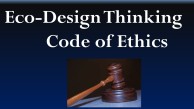 executives stated that the system would only provide warnings “milliseconds” before any potential danger. The tragedy of the Titanic could have been prevented if my Eco-Design Thinking Code of Ethics had been used. This aspect seems to be missing in the design industry in corporate America. Have you ever considered why corporate America’s design industry doesn’t have a code of ethics?
executives stated that the system would only provide warnings “milliseconds” before any potential danger. The tragedy of the Titanic could have been prevented if my Eco-Design Thinking Code of Ethics had been used. This aspect seems to be missing in the design industry in corporate America. Have you ever considered why corporate America’s design industry doesn’t have a code of ethics?
OceanGate’s Design Failure 4
OceanGate could have improved its amateurish, unethical, chaotic, disorganized, and improvised design process by following the 4 stages of the eco-design thinking model. Unfortunately, their trial-and-error design approach proved ineffective and led to undesirable outcomes. Within this section, I will elaborate on each stage of the design process where Stockton Rush deliberately made mistakes and neglected necessary design steps. In light of the OceanGate tragedy, it would be beneficial to take a closer look at the four stages of the eco-design thinking model, as outlined in my articles “How To Design a Better World” and “Circular & Value-based Design For Sustainability“:
Design stage 1: EXPLORE
Before approaching the design problem, it is essential to take two critical steps. Firstly, you must reflect on and revamp your life to reinvent yourself. Secondly, you must develop a compassionate understanding of the end user and the issue that requires resolution. This empathetic approach will aid in creating an effective design solution. This task will help you better understand yourself and the underlying design challenge. OceanGate had ignored this critical first design step entirely. The exploration phase includes three sub-phases:
- Personal disruptive innovation: Personal disruptive innovation refers to a framework and roadmap that helps you explore your life, develop resilience, reinvent and redesign your life, and uphold personal integrity. It’s about designing the designer’s life. By unlocking your creative potential, personal disruptive innovation allows you to disrupt the usual course of your life. Before exploring the design problem, it’s essential to understand yourself and the end users empathetically. As a leader, Stockton Rush struggled and exhibited a large ego, believing he had all the answers. Unfortunately, he lacked personal integrity, self-awareness, and self-knowledge. He clearly neglected crucial safety aspects despite being warned about it. He charged wealthy tourists an exorbitant amount of $250,000 for dives to explore the Titanic shipwreck while disregarding safety concerns. This behavior was reckless and unethical and put people’s lives at risk. In every design process, prioritizing personal disruptive innovation as the first step is crucial. I recommend reading my articles “Personal Disruptive Innovation”, “Crafting Your Authentic Personal Brand: A 5-Step Guide“, and “50 Tips For Becoming a Disruptor“ for further insights. It appears that Rush overlooked this crucial design step.
- Empathize: Before moving forward, gaining a compassionate understanding of the end users and the issue that needs to be resolved is essential. This can be achieved by listening to their stories, observing their behavior, and engaging with them. By empathizing with the customers, we can better understand their experiences and develop a personal connection with the design problem. Stockton Rush lacked empathy, and so did his design. He kept everything hidden from his customers. Cost reduction led Rush and his team to neglect this aspect of empathy. It appears that Rush also overlooked this crucial design step.
- Define: During this stage, you will compile the information collected during your empathetic research, analyze your observations, interpret the empirical findings, and define the problem in a way that is centered around the customers. The end result should be a customer-focused and human-centered problem statement. It appears that Rush also overlooked this crucial design step.
Design stage 2: IDEATE
The ideate phase is composed of three sub-phases, which are:
- Initiate: Choose a facilitator who can effectively initiate and manage discussions, revisit the problem, and establish guidelines for using design tools. It is essential that the chosen facilitator has experience with the personal disruptive innovation method and has applied it to himself. Stockton Rush appeared to be the facilitator, but his priorities seemed more focused on money and ego than the end user’s safety. His priorities would have differed if he had utilized the personal disruptive innovation approach. In this initiation phase, clear direction should have been provided for the design process. Unfortunately, an ad hoc approach was taken instead, with critical component design being outsourced to inexperienced college students. It appears that Rush also overlooked this crucial design step.
- Think: Engaging in divergent and convergent thinking is essential to develop innovative design ideas. Begin by spending approximately one-third of the allotted time on divergent thinking, which involves generating multiple solutions to a problem without being constrained by traditional approaches. Then, allocate around one-sixth of the time to convergent thinking, which entails refining and strengthening ideas by combining and building upon them. Stockton Rush apparently did not dedicate sufficient time to the creative thinking process. Instead, he delegated this crucial design step to college students and external consultants. Additionally, he did not consider the potential benefits of utilizing generative AI to generate more innovative design concepts. Please read “OceanGate CEO used college interns to design sub’s electrical system.”
- Synthesize: To create a coherent whole, it is essential to combine various product ideas. Use one-third of the allocated time to synthesize your ideas. Analyze and connect your thoughts, and choose the strongest to create themes. Cluster similar ideas together and select the best clusters. Assign a group to each set to evaluate the ideas, and hold separate follow-up meetings to eliminate any unusable ideas based on selection criteria. Rush synthesized the Titan design by utilizing affordable off-the-shelf components from local stores to reduce costs. According to a former OceanGate subcontractor, the design of the Titan sub was intentionally simplistic and cheesy.
Design stage 3: PROTOTYPE
The prototype phase is made up of three sub-phases, which are:
- Create an experience: After implementing solutions into the prototypes, they are evaluated based on user experiences. It is essential to guide the customers through the prototype to allow them to experience it firsthand. Use product storyboards to visualize the design concept from start to finish. Generative AI tools such as Stable Diffusion can be helpful in this stage. Stockton Rush failed to disclose design information and kept everything hidden from his customers. He marketed his vessel as safe, but experts say he used materials that ‘simply didn’t work.’ People familiar with this field were already alarmed by the design materials used for the vessel. It appears that Rush also overlooked this crucial design step.
- Feedback: You can improve your solution by listening to customer feedback. It may be helpful to utilize storytelling once again to gather feedback. Generative AI can aid in accepting new ideas from the user, while Stable Diffusion can help design a better solution. Rush neglected to disclose critical design information regarding the Titan to his customers due to his reluctance to solicit safety-related feedback on the vessel. It appears that Rush also overlooked this crucial design step.
- Iterate: If the customer disapproves of the solution and provides negative feedback, you must make adjustments and repeat the process. This involves modifying the prototype based on the feedback received. If the customers are not content with the results, redefining the issue and empathizing with them more effectively is essential. Rush overlooked the importance of this design stage by disregarding the opinions of his customers and experts. He believed his design was flawless and required no revisions or iterations.
Design stage 4: EXECUTE
The execute phase is made up of three sub-phases:
- Test: When presenting the prototype, it is essential to allow the end users to fully experience it. Through testing, you can determine whether the solution is effective or not. The tragedy of the OceanGate Titan submarine could have been avoided if proper testing had been performed before its use. Under no circumstances should the sub be used for commercial deep dive missions until thoroughly tested. Rush declined to comply with safety inspections. OceanGate’s former marine operations director, David Lochridge, filed a lawsuit in 2018 claiming that the company’s testing and certification procedures for their experimental submersible were insufficient. Lochridge suggested using ultrasonic scans, but the company declined. Neal Couture of the American Society for Nondestructive Testing explained that ultrasonic testing can identify deteriorating composite areas within the structure. According to a former passenger, the Titan suffered a malfunction during a test dive in 2021, which caused its thrusters to fail. The vessel was submerged for over two hours, leaving its occupants stranded and helpless. During a test dive, the vessel also experienced a communication system failure and propulsion system malfunction. This occurred in relatively shallow waters of approximately 100 feet. A former OceanGate passenger says Rush gave terrifying answers to questions about safety. It appears that Rush also overlooked this crucial design step.
- Refine: If the testing phase doesn’t yield positive results, it will be necessary to go through another round of iteration to refine the design. After testing, the process can be repeated to improve the solution or move on to the implementation stage if the end user approves. Stockton Rush neglected the significance of this design stage and failed to gain much insight from the testing phase. He confidently assumed his design was perfect and did not need further refinement.
- Implement: Once the final solution has been approved, it will be implemented, realized, and communicated. Take pleasure in the eco-design thinking experience and note what you have learned and unlearned throughout the design process. Celebrate any accomplishments and move forward to the next project. Rush believed he knew everything and had no room for further learning. The Titan design was not ready to implement. As early as 2018, David Lochridge reportedly noticed deficiencies with the submersible, and when he voiced his concerns, Rush fired him. Lochridge filled nine significant shortcomings with the Titan to sue OceanGate:
- The carbon fiber lamination of the submersible’s hull showed “visible signs of delamination and porosity.”
- Adhesive was coming loose from seams in the ballast pockets
- Fastening screws on ballast pockets posed a risk of cracking
- Faulty plunge holes on sealing surfaces did not meet design standards
- The structure and the electrical pods of the Titan were made of different materials – contact with seawater could have led to an electrochemical reaction, which could have caused significant damage
- Danger from “hanging” thruster cables
- The beacon (location light), which indicates the location of the submersible when surfacing, was attached with only cable ties
- Highly flammable floor of the submersible
- Vinyl cladding inside the Titan would have emitted highly toxic gases in the event of a fire
These flaws made it evident that the Titan should not be put into operation. According to reports, Stockton Rush responded angrily to Lochridge’s feedback, asserting that safety testing was unnecessary.
Important lessons learned
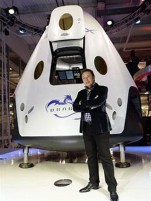 prioritize their personal design choices over essential product elements and critical safety regulations, endangering human lives. They can learn a valuable lesson from the tragedy of the Titan. This also applies to individuals like Elon Musk and companies like Boeing.
prioritize their personal design choices over essential product elements and critical safety regulations, endangering human lives. They can learn a valuable lesson from the tragedy of the Titan. This also applies to individuals like Elon Musk and companies like Boeing. two aircrafts, which occurred within months of each other and claimed the lives of 346 individuals, to the US aircraft manufacturer’s shortcuts and pressure on regulators to overlook certain aspects of the airplane’s new design to compete with European competitor Airbus. The Boeing 737 Max had flaws in its design due to unreliable sensors and cut corners to save money. Some crashes were linked to the absence of warning lights and issues with pilot training and maintenance logs. Once again, ethics were a contributing factor in this situation.
two aircrafts, which occurred within months of each other and claimed the lives of 346 individuals, to the US aircraft manufacturer’s shortcuts and pressure on regulators to overlook certain aspects of the airplane’s new design to compete with European competitor Airbus. The Boeing 737 Max had flaws in its design due to unreliable sensors and cut corners to save money. Some crashes were linked to the absence of warning lights and issues with pilot training and maintenance logs. Once again, ethics were a contributing factor in this situation.
- Before delving into design issues, exploring and redesigning your life is based on the Personal Disruptive Innovation Methodology. This approach leads to more integer, intelligent, innovative designs and better use of generative AI tools like Midjourney, ChatGPT, and Stable Diffusion, resulting in empathetic designs.
- A high level of personal integrity and designer’s empathy based on the personal disruptive innovation system and the Eco-Design Thinking Code of Ethics is necessary to achieve reliable designs and higher design quality.
- Adopting a circular and iterative design approach without any fixed endpoint is essential. This process should be a continuous cycle involving testing and refining the design before building the final product. You can achieve better design outcomes by gradually building and enhancing the product and detecting defects early on.
Read my articles Building a Purpose-Driven Design Culture in Tech Companies,
Complimentary Initial Consultation to Enhance Your Design Process and Boost Design Team Performance
If you’re interested in gaining more knowledge about this subject, you may want to consider attending his Free Live Webinar: Why OceanGate’s Design Approach Sucks
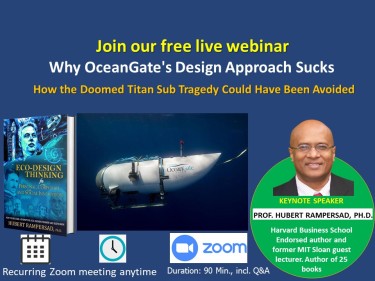
You may also consider attending his Orlando-Tampa Live Events:
Building a Purpose-Driven Design Culture in Tech Companies
“How Sustainability and Generative AI Fuel Design Innovation.”
Hubert Rampersad, Ph.D., founded the Center of Excellence in Human-Centered and Purpose-Driven Innovation in Orlando. He is a visionary leader in innovative solutions for genuine sustainability, disruptive design innovation, critical thinking in the age of AI, human-centered and purpose-driven AI, and entrepreneurial leadership. He holds a Ph.D. in Innovation Sciences, an MSc in Technology Engineering & Robotics, and a BSc in Mechanical Engineering from leading accredited universities in the Netherlands (Delft University of Technology, Eindhoven University of Technology). He is a well-known futurist, advocating for genuine sustainability on a global scale. With extensive knowledge and expertise, he has authored 25 books on the topics above in many languages and is highly regarded for his insights in these fields. One of his books, “Total Performance Scorecard,” has been published in 20 languages. Dorothy Leonard, an innovation professor at Harvard Business School, wrote the book’s foreword. Rampersad has also previously served as a guest lecturer at MIT Sloan and was featured in BusinessWeek. He was a senior design innovation coach at ASML (the Most Important Tech Company in the World).
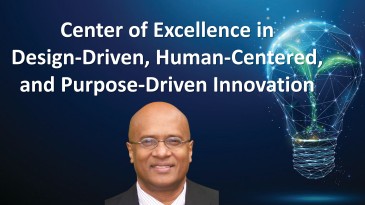
Orlando, Florida | tpsi@live.com | Phone/WhatsApp: +13053992116
